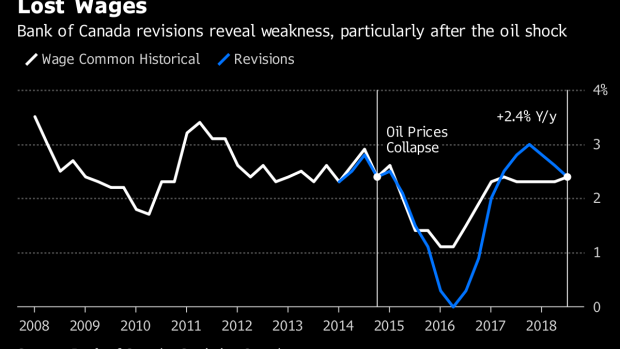Dec 7, 2018
Canada’s Wage Picture Is Even Weaker Than Previously Thought
, Bloomberg News

(Bloomberg) -- Wage pressures in Canada were even weaker than previously thought after the 2014 oil crash, revised data from the central bank show.
The Bank of Canada’s modified “wage common” figures -- which follow downward revisions to income by the federal statistics agency last month -- show a stronger 2017 than previously thought, but a weaker picture in the previous two years, as the economy adjusted to the impact of the oil price shock at the time.
Over the last three years, annual wage gains averaged 1.7 percent between the beginning of 2015 and June this year, down from a previous estimate of 1.9 percent. The Bank of Canada estimates that an economy running at full steam should be able to generate wage gains of about 3 percent. Anything less than that may indicate slack remains in the labor force.
The central bank’s latest figures show annual gains still short of that number, or 2.4 percent in the third quarter, the weakest in more than a year and down from a revised 2.7 percent in the first half. Gains were as high as 3 percent at the end of last year.
To get a true gauge of underlying wage pressure, the Bank of Canada calculates its benchmark index by assigning weights on measures of labor compensation from four different data sets: payrolls, the labor force survey, national accounts and productivity data.
To contact the reporters on this story: Theophilos Argitis in Ottawa at targitis@bloomberg.net;Erik Hertzberg in Ottawa at eschmitzhert@bloomberg.net
To contact the editors responsible for this story: Theophilos Argitis at targitis@bloomberg.net, Chris Fournier, Stephen Wicary
©2018 Bloomberg L.P.


